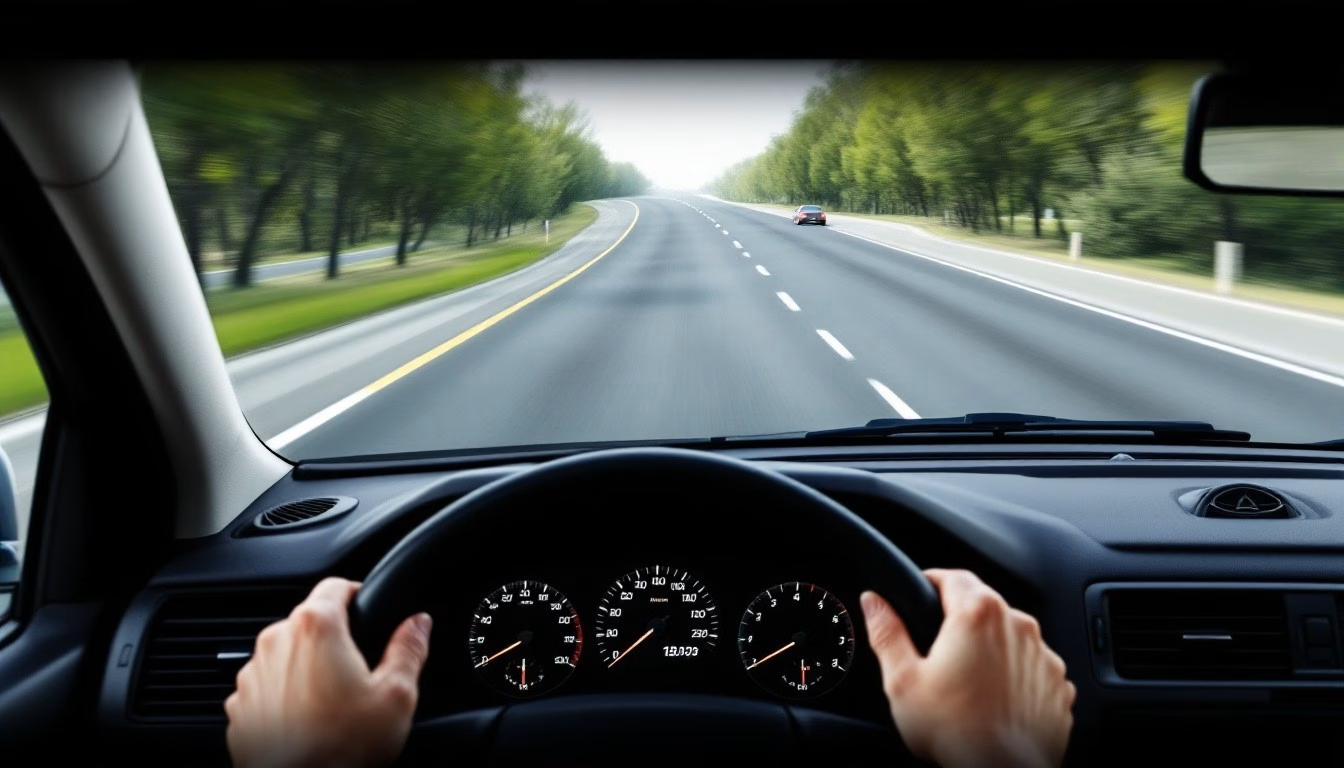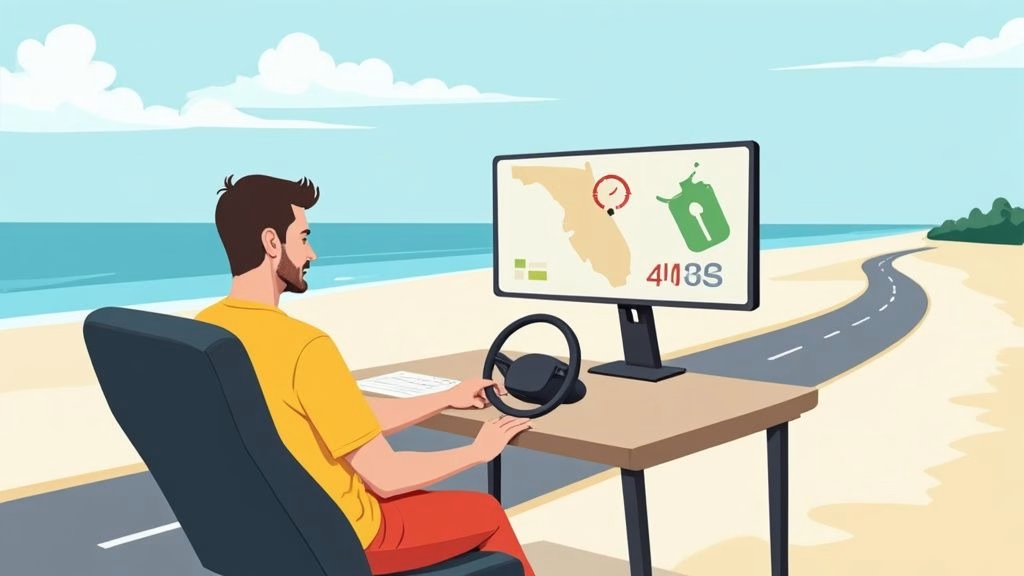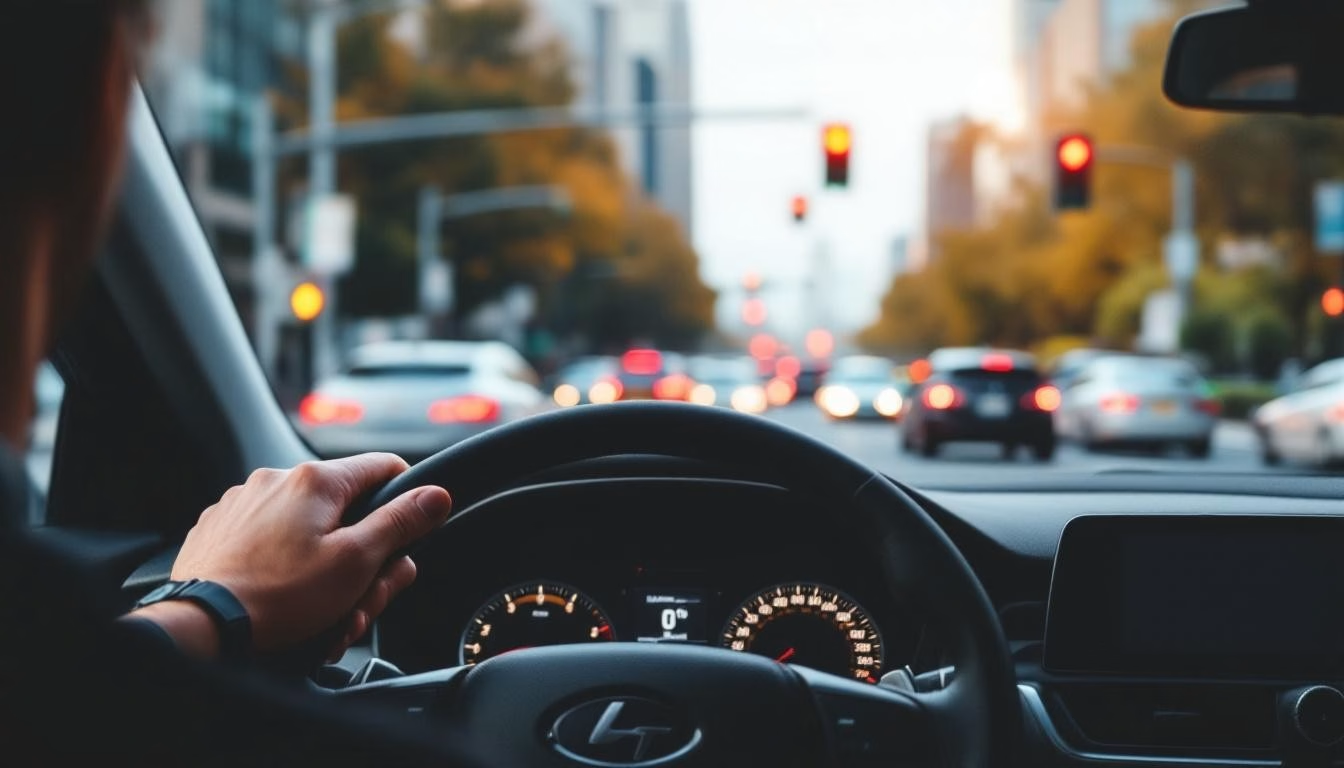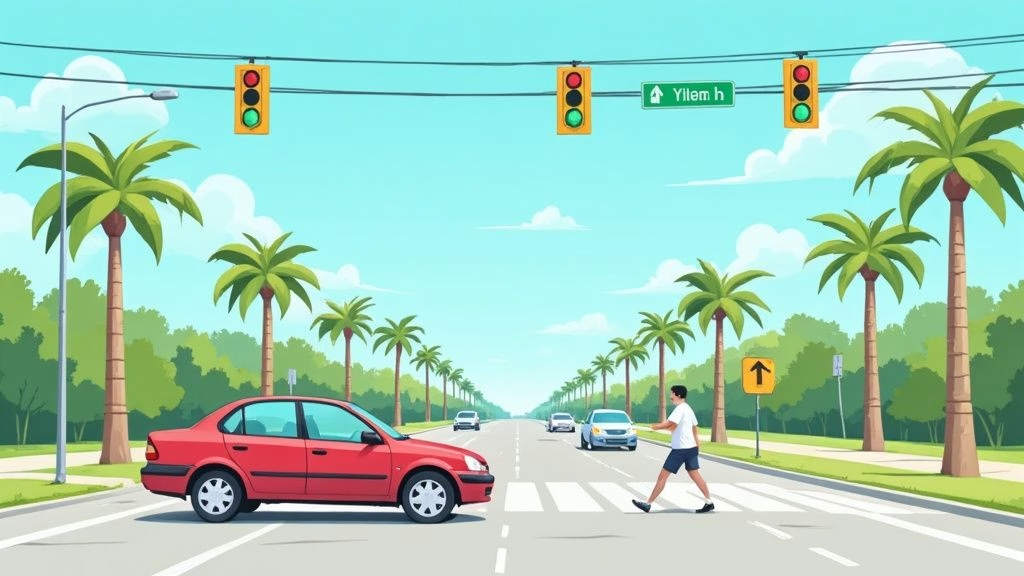At floridadetscourse.com, we know that mastering defensive driving techniques is key to staying safe on the road.
Two systems of defensive driving are widely recognized for their effectiveness: the Smith System and the IPDE System.
In this post, we’ll break down these essential approaches and show you how to integrate them for maximum safety behind the wheel.
The Smith System: Five Keys to Safe Driving
The Smith System stands as a cornerstone of defensive driving, developed by Harold Smith in 1952. This system prioritizes driver safety by enhancing three key areas: space, visibility, and reaction time, which is why many driving schools teach it to their students.
Understanding the Five Keys
The Smith System consists of five key principles:
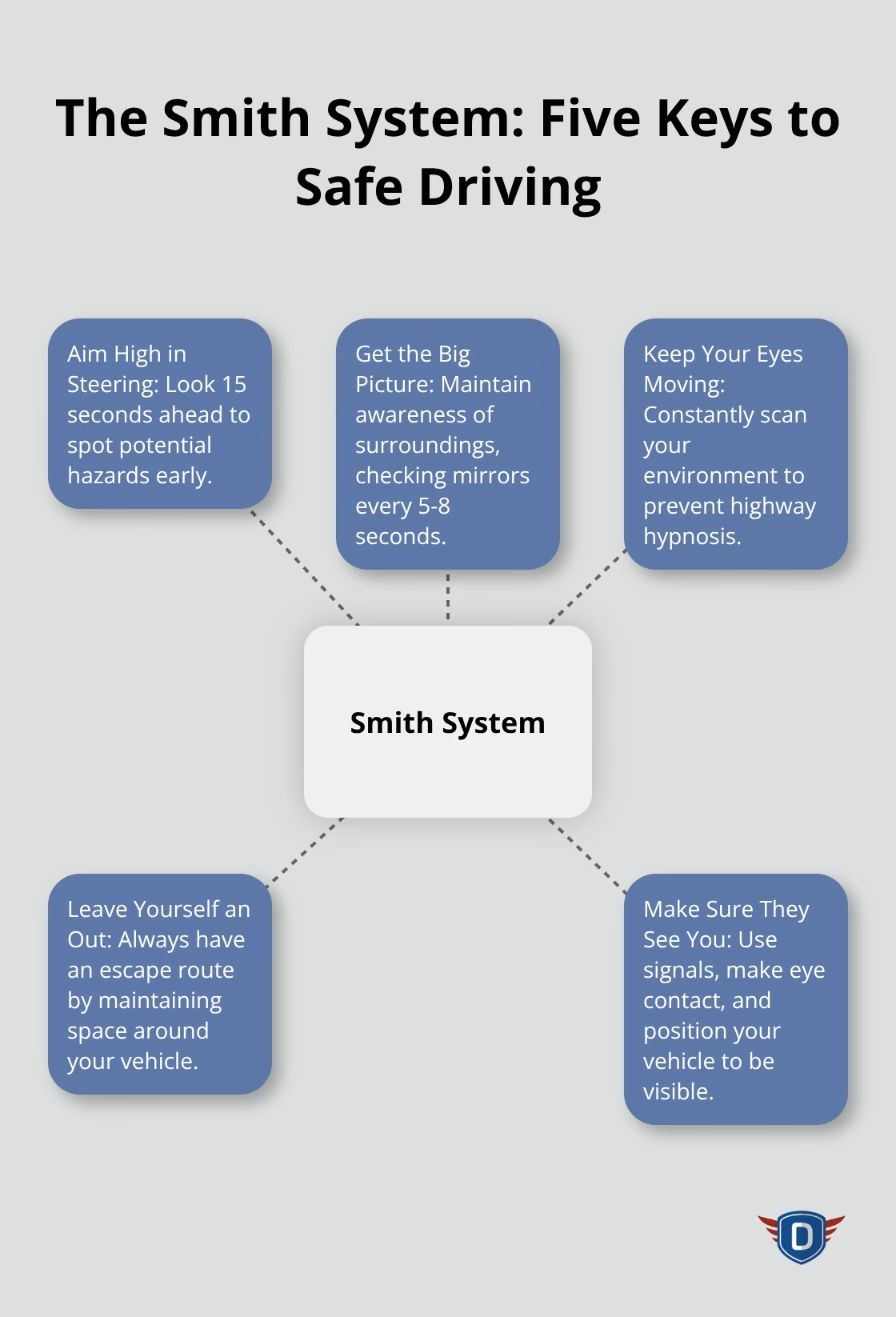
- Aim High in Steering: Look 15 seconds ahead of your vehicle. This practice allows you to spot potential hazards early and make smooth adjustments.
- Get the Big Picture: Maintain awareness of your surroundings. Check your mirrors every 5-8 seconds to stay informed about vehicles around you.
- Keep Your Eyes Moving: Avoid fixating on any one thing. Constantly scan your environment to prevent highway hypnosis.
- Leave Yourself an Out: Always have an escape route. Maintain space around your vehicle, especially in front and to at least one side.
- Make Sure They See You: Use your signals, make eye contact with other drivers, and position your vehicle to be visible.
Practical Application
The implementation of these principles can dramatically improve your driving safety. For example, when you aim high in steering, you’ll spot a stalled vehicle on the highway long before it becomes an immediate threat. This practice gives you ample time to change lanes safely.
The National Safety Council suggests drivers put extra following distance between vehicles, especially when riding a motorcycle. When you get the big picture and leave yourself an out, you ensure you have this important space.
Impact on Road Safety
Fleet operators who have implemented the Smith System have seen significant reductions in accident rates. One major delivery company reported a 60% decrease in accidents after training their drivers in this method.
Many driving schools have witnessed firsthand how the Smith System transforms novice drivers into confident, safe road users. It’s not just about passing a test; it’s about developing lifelong habits that keep you and others safe on the road.
Benefits of the Smith System
The Smith System offers numerous benefits to drivers:
- Increased Awareness: Drivers become more attuned to their surroundings (both immediate and distant).
- Improved Reaction Time: Early hazard detection allows for smoother, safer responses.
- Reduced Stress: Better anticipation leads to calmer, more confident driving.
- Fuel Efficiency: Smoother driving often results in better fuel economy.
Integrating the Smith System
To fully benefit from the Smith System, drivers should practice these techniques consistently. Over time, these habits become second nature, leading to safer driving practices overall. As we move on to discuss the IPDE System, you’ll see how these two approaches complement each other for comprehensive defensive driving.
How Does the IPDE System Enhance Defensive Driving?
Understanding the IPDE System
The IPDE System serves as a powerful complement to the Smith System, offering a structured approach to defensive driving. This system transforms a driver’s ability to navigate complex road situations safely.
IPDE stands for Identify, Predict, Decide, and Execute. This system encourages drivers to assess their environment constantly and make informed decisions. Let’s explore each step:
Identifying Potential Hazards
Drivers must scan their surroundings for potential hazards. This includes other vehicles, pedestrians, road conditions, and even weather changes. The National Highway Traffic Safety Administration reports that approximately 94% of all car crashes are attributed to human error, which underscores the importance of thorough hazard identification.
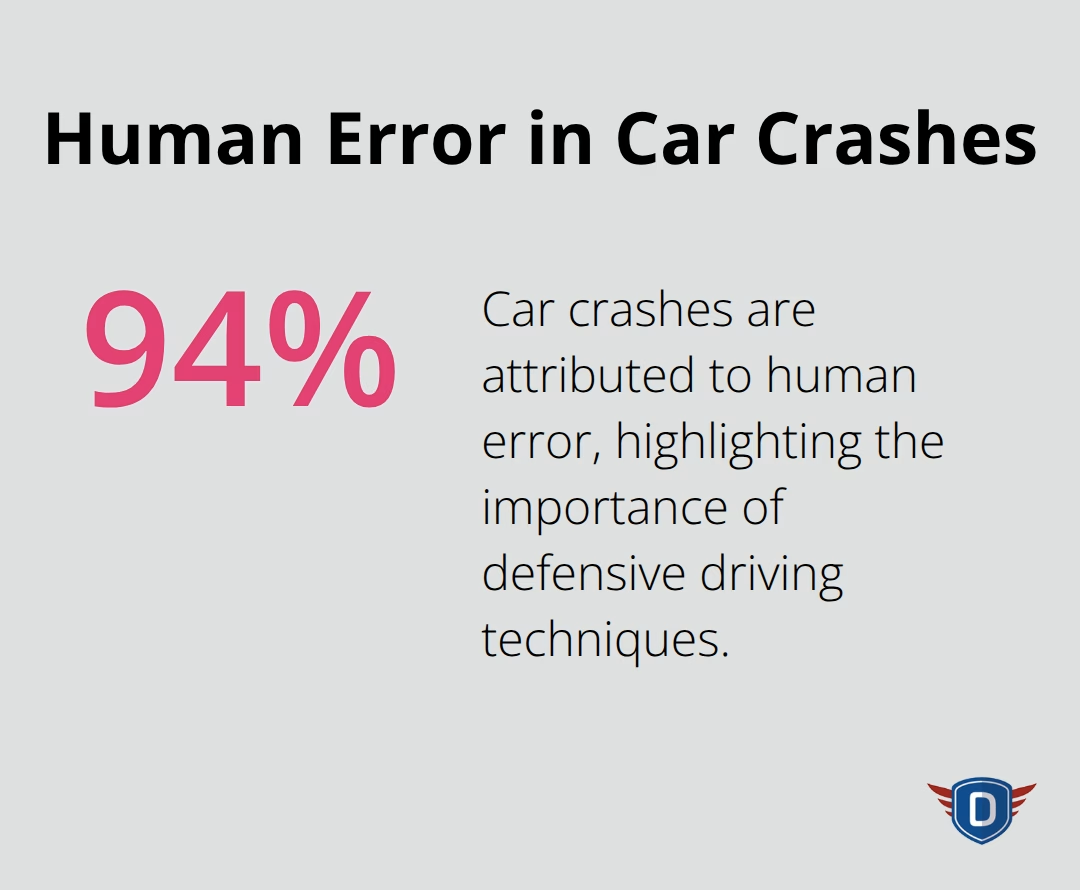
Predicting Possible Outcomes
After identifying potential hazards, drivers should anticipate how these hazards might affect their driving. For example, if a driver spots a child playing near the street, they should predict that the child might suddenly run into the road.
Deciding on the Best Course of Action
Based on predictions, drivers must determine the best course of action. This might involve slowing down, changing lanes, or preparing to stop. Quick and accurate decision-making is essential for safe driving.
Executing the Decision
The final step involves putting the decision into action smoothly and decisively. The key is to act early enough to avoid sudden, jerky movements that could startle other drivers.
Practical Application of IPDE
To illustrate how IPDE works in real-world scenarios, consider a common situation. You’re driving on a busy street and spot a delivery truck double-parked ahead.
- Identify: You notice the truck and see that it’s blocking part of your lane.
- Predict: You anticipate that cars might suddenly swerve into your lane to avoid the truck. You also predict that a pedestrian might step out from behind the truck to cross the street.
- Decide: You choose to slow down and prepare to change lanes if necessary.
- Execute: You reduce your speed gradually and signal to move into the left lane when it’s safe to do so.
The IPDE System works best when combined with other defensive driving techniques. For instance, the Smith System’s “Aim High in Steering” principle aligns perfectly with the “Identify” step of IPDE. Looking far ahead gives you more time to spot potential hazards.
Similarly, the “Get the Big Picture” key from the Smith System enhances your ability to predict possible outcomes in the IPDE approach. Maintaining awareness of your surroundings equips you to anticipate how identified hazards might develop.
Students who master both approaches show significant improvements in their road awareness and decision-making skills. The combination of these systems (IPDE and Smith) creates a comprehensive approach to defensive driving, ensuring drivers are well-prepared for various road situations.
How to Combine Smith and IPDE for Safer Driving
Synergy in Action
The Smith System and IPDE approach create a powerful combination for defensive driving. The Smith System’s “Aim High in Steering” principle aligns perfectly with the “Identify” step of IPDE. When drivers look 15 seconds ahead, they spot potential hazards early, allowing more time to work through the IPDE process. For example, a driver might notice a car weaving in traffic ahead. This observation initiates the IPDE sequence: the driver identifies the erratic vehicle, predicts a possible sudden lane change, decides to create more space, and executes by slowing down or changing lanes safely.
Real-World Application
Let’s consider a scenario at an intersection. The Smith System’s “Get the Big Picture” key prompts drivers to check mirrors and scan the entire area. A driver notices a pedestrian looking at their phone near the crosswalk (Identify). The driver predicts the pedestrian might step into the road without looking (Predict). The driver then decides to slow down and cover the brake (Decide). As the driver approaches, the pedestrian steps off the curb, and the driver stops safely (Execute).
This example illustrates how the two systems work together. The Smith System habits set up drivers to gather essential information, while the IPDE process guides decision-making and actions.
Measurable Benefits
Drivers who integrate both systems often experience tangible improvements in their driving performance. A study found that beginner-trained riders moved faster in curves on the close course, while experienced riders moved faster in curves on the open road when using comprehensive defensive driving techniques.
Insurance companies recognize the value of these combined techniques. Many offer discounts of 5% to 20% for drivers who complete defensive driving courses. This financial incentive underscores the proven effectiveness of mastering both approaches.
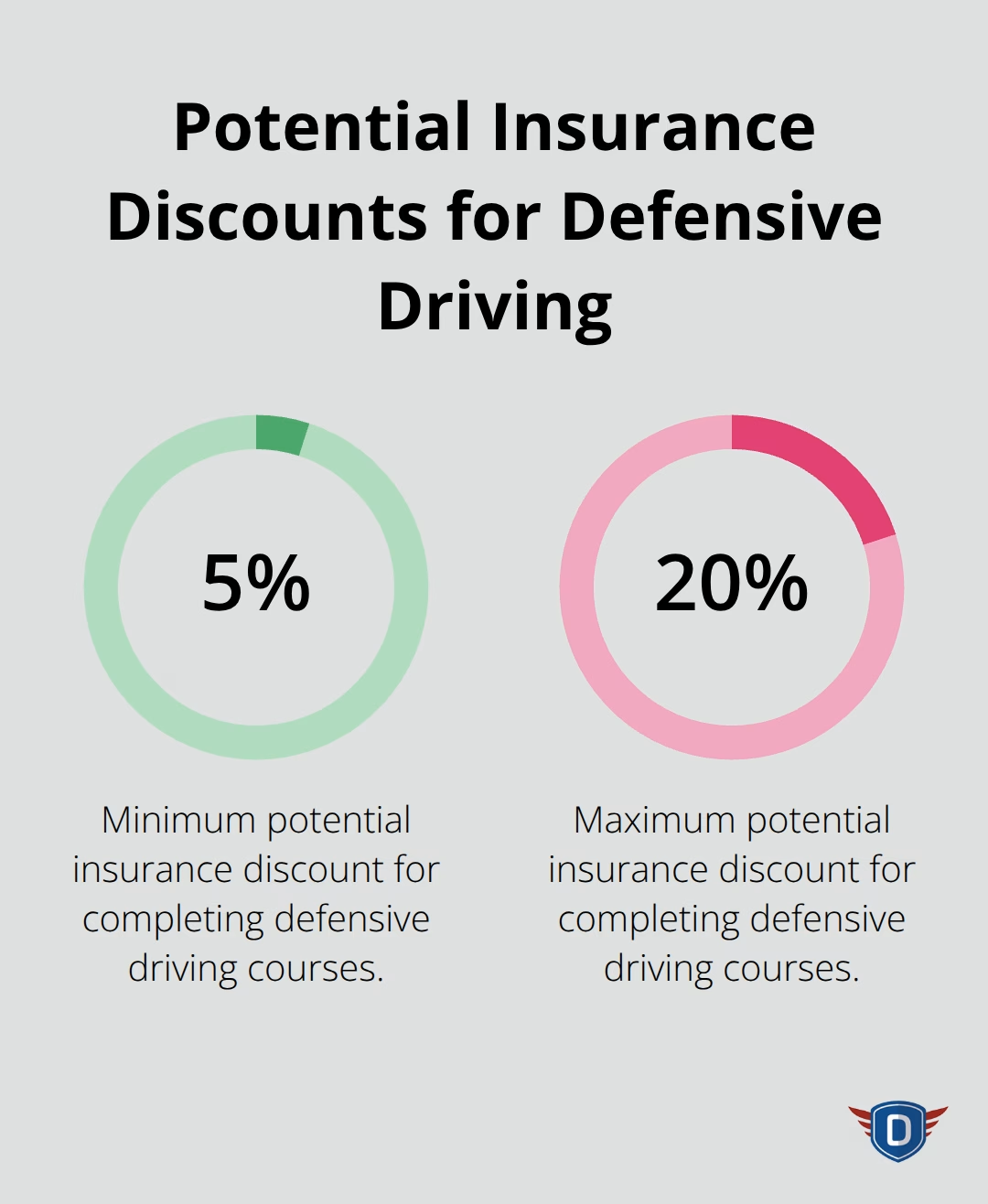
Enhanced Driver Confidence
Students who excel in both systems typically pass their driving tests with higher scores and report feeling more prepared for real-world driving challenges. They handle complex traffic situations better and are less likely to be caught off guard by unexpected events on the road.
A Proactive Mindset
The integration of the Smith System and IPDE approach creates a robust framework for safe driving that goes beyond basic rules and regulations. This integrated approach fosters a proactive mindset, transforming defensive driving from a concept into a natural, instinctive practice.
Final Thoughts
The Smith System and IPDE approach form two powerful systems of defensive driving. These techniques foster a proactive mindset that transforms defensive driving from a concept into an instinctive practice. Drivers who implement these systems enhance their awareness, decision-making, and overall safety on the road.
Human error accounts for most traffic accidents, but adopting these systems can reduce collision risks and save lives. The benefits extend beyond safety to include potential insurance discounts (5% to 20%), improved fuel efficiency, and increased driver confidence. We at floridadetscourse.com encourage all drivers to practice these systems consistently.
For those who want to master these essential defensive driving techniques, floridadetscourse.com offers comprehensive driver education programs. Our certified instructors help you become a safe, confident driver equipped with the skills to navigate any road situation effectively. Start implementing these techniques today and experience their transformative impact on your driving skills and road safety.

